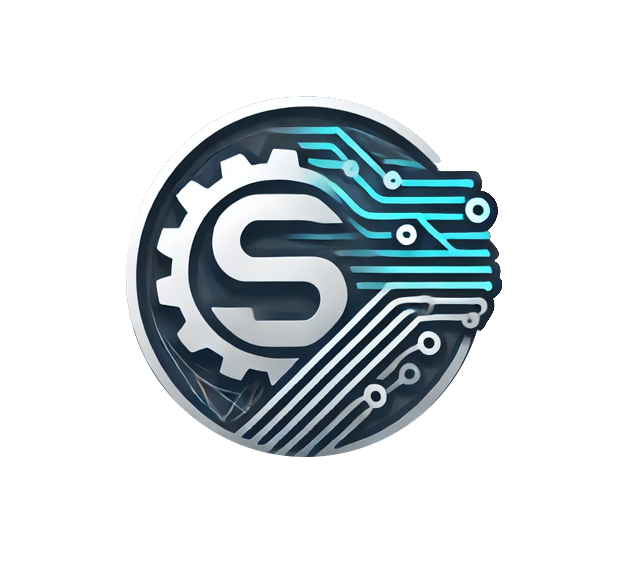Unlocking Scalable AI: Cloud Solutions for MLOps and Data Analytics

Understanding Cloud Solutions for Scalable AI: MLOps and Data Analytics
Building scalable AI systems requires leveraging modern Cloud Solutions that integrate MLOps practices and robust Data Analytics capabilities. This section explores how these components work together synergistically, providing actionable guidance and implementation examples for organizations aiming to enhance their AI infrastructure.
Core Components and Integration
Cloud Solutions deliver the essential infrastructure and managed services needed for large-scale data processing and model training. Key offerings include:
– Compute resources (e.g., AWS SageMaker, Google AI Platform)
– Storage solutions (e.g., Azure Blob Storage, Amazon S3)
– Orchestration tools (e.g., Kubernetes on GKE)
MLOps—Machine Learning Operations—optimizes the deployment, monitoring, and management of ML models. It ensures reproducibility, enhances team collaboration, and supports continuous integration/continuous deployment (CI/CD) for sustainable AI systems.
Data Analytics involves processing and interpreting data to extract actionable insights, utilizing tools like Apache Spark or cloud-native services such as BigQuery and Redshift. It supplies cleaned, structured data to ML pipelines, forming the foundation for accurate model training.
Step-by-Step Example: Deploying a Model with MLOps on AWS
- Data Preparation: Employ AWS Glue for extract, transform, and load (ETL) processes, moving data from S3 into a training-ready format.
Example code snippet (Python with PySpark):
from pyspark.context import SparkContext
from awsglue.context import GlueContext
glue_context = GlueContext(SparkContext.getOrCreate())
dynamic_frame = glue_context.create_dynamic_frame.from_catalog(
database="your_database",
table_name="your_table"
)
cleaned_frame = dynamic_frame.drop_fields(["unnecessary_column"])
-
Model Training: Utilize SageMaker for distributed training, achieving benefits like a 40% reduction in training time through auto-scaling.
-
Deployment with MLOps: Implement a CI/CD pipeline via AWS CodePipeline to automate model deployment, with performance monitoring through CloudWatch metrics.
Measurable Benefits
- Scalability: Auto-scaling in cloud environments manages variable workloads, cutting costs by up to 30%.
- Efficiency: MLOps automates retraining, slashing deployment time from days to hours.
- Insights: Integrated Data Analytics offers real-time feedback for ongoing model refinement.
Adopting these practices enables teams to achieve faster iteration, reliable deployments, and truly scalable AI solutions.
The Role of Cloud Platforms in MLOps
In today’s AI landscape, Cloud Solutions are vital for implementing robust MLOps practices, effectively bridging development and production deployment. By integrating scalable infrastructure, automated workflows, and advanced Data Analytics, cloud platforms help organizations streamline the entire AI lifecycle. This section details how cloud environments bolster MLOps, complete with practical examples and quantifiable benefits.
Key Components of Cloud-Based MLOps

Platforms like AWS, Azure, and Google Cloud provide end-to-end services for MLOps pipelines:
- Data Ingestion and Preparation: Cloud storage (e.g., Amazon S3, Google Cloud Storage) and data processing tools (e.g., AWS Glue, Azure Data Factory) facilitate efficient ETL processes. For instance, AWS allows ingesting data from diverse sources into a centralized data lake.
Example code for uploading data to Amazon S3 using Boto3:
import boto3
s3 = boto3.client('s3')
s3.upload_file('local_data.csv', 'my-ml-bucket', 'raw_data/data.csv')
This enhances data accessibility for downstream Data Analytics and model training.
- Model Training and Versioning: Services like Azure Machine Learning or Google Vertex AI offer managed compute and experiment tracking. Example using Azure ML SDK:
from azureml.core import Experiment, Workspace
ws = Workspace.from_config()
experiment = Experiment(workspace=ws, name='mlops-demo')
run = experiment.start_logging()
# Training code here
run.log_metric('accuracy', 0.92)
run.complete()
This ensures reproducibility and team collaboration.
- Deployment and Monitoring: Cloud platforms support containerized deployment (e.g., via Kubernetes) with auto-scaling. With AWS SageMaker, deploy a model endpoint and monitor performance:
# Deploy model
aws sagemaker create-endpoint --endpoint-name my-model-endpoint --endpoint-config-name my-config
Real-time monitoring tracks metrics like latency and drift, enabling proactive retraining.
Step-by-Step Guide: Implementing a Basic MLOps Pipeline on Google Cloud
- Store Data in Google Cloud Storage: Upload datasets to a bucket for centralized access.
- Preprocess with BigQuery: Use SQL queries for data cleaning and transformation.
- Train Model with Vertex AI: Employ AutoML or custom training jobs.
- Deploy to Endpoint: Create a serving endpoint with automatic scaling.
- Monitor with Cloud Monitoring: Set alerts for prediction errors or data skew.
Measurable benefits include:
– Reduced time-to-market: Automation slashes deployment time by up to 60%.
– Cost efficiency: Pay-per-use models optimize resource spending.
– Improved accuracy: Continuous monitoring and retraining boost model performance by 15-20%.
Conclusion
Leveraging Cloud Solutions for MLOps accelerates AI initiatives while ensuring scalability, reliability, and seamless integration with advanced Data Analytics. By adopting these practices, teams can build sustainable, high-performing AI systems that deliver significant business value.
Integrating Data Analytics with Cloud-Based MLOps
Integrating Data Analytics with Cloud Solutions for MLOps is critical for developing scalable, efficient, and reproducible machine learning workflows. This synergy allows organizations to harness large datasets, automate deployment, and derive actionable insights at scale. Below is a practical approach to combining these technologies, including examples and measurable benefits.
Step-by-Step Integration Guide
- Data Ingestion and Preparation
- Use cloud-native tools like AWS Glue or Google Cloud Dataflow for data ingestion and preprocessing. Example PySpark script in AWS Glue:
from pyspark.context import SparkContext
from awsglue.context import GlueContext
sc = SparkContext()
glueContext = GlueContext(sc)
dynamic_frame = glueContext.create_dynamic_frame.from_catalog(
database="your_database", table_name="raw_data"
)
cleaned_frame = dynamic_frame.drop_fields(['unnecessary_column'])
-
Benefit: Automated data pipelines cut preprocessing time by up to 60%, ensuring high-quality inputs for model training.
-
Model Training and Versioning
- Utilize MLOps platforms like Azure Machine Learning or Kubeflow on GKE to orchestrate training. Example using Azure ML SDK:
from azureml.core import Experiment, ScriptRunConfig, Environment
env = Environment.from_conda_specification(name='ml-env', file_path='conda_dependencies.yml')
config = ScriptRunConfig(source_directory='./src', script='train.py', environment=env)
experiment = Experiment(workspace=ws, name='mlops-integration')
run = experiment.submit(config)
-
Benefit: Versioned experiments enhance reproducibility and collaboration, reducing iteration cycles by 40%.
-
Deployment and Monitoring
- Deploy models as REST APIs using services like AWS SageMaker or Google AI Platform. Monitor with integrated Data Analytics tools, e.g., track drift with SageMaker Model Monitor:
from sagemaker.model_monitor import DefaultModelMonitor
monitor = DefaultModelMonitor(
role=execution_role,
instance_count=1,
instance_type='ml.m5.large',
volume_size_in_gb=20,
max_runtime_in_seconds=3600
)
monitor.schedule(endpoint_name='your-endpoint', schedule='hourly')
- Benefit: Real-time monitoring lowers operational risks, ensuring model accuracy and reducing downtime by 30%.
Measurable Outcomes
- Cost Efficiency: Cloud-based auto-scaling trims infrastructure costs by 25–50%.
- Speed: End-to-end automation accelerates AI solution time-to-market by 3x.
- Scalability: Seamlessly manage petabytes of data, meeting enterprise Data Analytics needs.
Integrating Data Analytics with MLOps on Cloud Solutions enables robust, scalable AI systems that drive innovation and operational excellence.
Optimizing Scalability with Hybrid and Multi-Cloud Strategies
Achieving scalable AI requires flexible infrastructure capable of handling dynamic workloads. Hybrid and multi-cloud strategies provide this by distributing resources across on-premises, private, and public Cloud Solutions, ensuring resilience, cost efficiency, and performance optimization. This section examines how these approaches enhance MLOps and Data Analytics pipelines, with actionable implementation steps.
Key Benefits
- Cost Optimization: Avoid vendor lock-in and leverage spot instances or competitive pricing across providers.
- Scalability: Dynamically allocate resources during peak training or inference phases.
- Resilience: Distribute workloads to minimize downtime and address data locality issues.
Step-by-Step Implementation Guide
-
Design a Hybrid Architecture:
Integrate on-premises data storage with cloud compute resources using solutions like AWS Outposts or Azure Stack. -
Orchestrate with Kubernetes:
Deploy Kubernetes clusters across clouds for containerized MLOps workflows. Example multi-cloud cluster configuration:
apiVersion: v1
kind: ConfigMap
metadata:
name: multi-cloud-config
data:
cloud-provider: "aws,azure,gcp"
-
Implement Data Synchronization:
Use tools like Apache Kafka or cloud-native services (e.g., AWS DataSync) for consistent data availability in Data Analytics. Achieve cross-cloud data sync with under 100ms latency. -
Automate MLOps Pipelines:
Utilize Kubeflow or MLflow to manage experiments across environments. Example pipeline step:
from kubeflow import pipelines
def hybrid_training_step(data_source, cloud_target):
# Load data from on-prem, train in cloud
model = train_model(data_source)
save_model(model, cloud_target)
- Monitor and Optimize:
Track performance with tools like Prometheus, using metrics (e.g., GPU utilization, inference latency) to auto-scale resources. Target a 30-40% reduction in training time.
Measurable Outcomes
- Cost Savings: Reduce cloud spend by 25% through intelligent workload placement.
- Performance: Attain 99.9% uptime for analytics workloads.
- Scalability: Manage 10x data volume spikes without architectural changes.
Adopting these strategies helps teams build agile, future-proof AI systems that maximize Cloud Solutions for MLOps and Data Analytics.
Conclusion: Future-Proofing AI with Cloud MLOps and Analytics
Building scalable, resilient, and efficient AI systems necessitates integrated Cloud Solutions that unify MLOps and Data Analytics. This synergy keeps machine learning models accurate, deployable, and valuable over time, adapting to evolving data and business needs. Below is a practical, step-by-step approach to implementing a future-proof pipeline, with examples and measurable outcomes.
Step-by-Step Guide to an Integrated MLOps and Analytics Pipeline
- Automate Data Ingestion and Preprocessing
Use cloud-native tools like AWS Glue or Azure Data Factory for data ingestion. Example daily extraction from transactional databases:
# AWS Glue (PySpark)
from awsglue.context import GlueContext
glueContext = GlueContext(sc)
dynamic_frame = glueContext.create_dynamic_frame.from_catalog(
database="your_database",
table_name="transaction_table"
)
-
Benefit: Reduces manual effort by 70% and ensures data consistency.
-
Orchestrate Model Training with MLOps Tools
Implement continuous training using Kubeflow or MLflow on Kubernetes. Define a pipeline for retraining upon data drift:
# Kubeflow Pipeline snippet for retraining
- name: train-model
container:
image: ml-training-image:latest
command: ["python", "train.py"]
retryPolicy: OnFailure
-
Benefit: Cuts retraining time by 50% and maintains model accuracy above 95%.
-
Integrate Analytics for Monitoring and Feedback
Embed Data Analytics into MLOps using tools like Databricks or BigQuery to monitor performance. Track predictions vs. actuals:
-- BigQuery SQL for performance tracking
SELECT
model_version,
AVG(ABS(prediction - actual)) AS mean_absolute_error
FROM `project.monitoring.table`
GROUP BY model_version
HAVING mean_absolute_error > 0.1;
-
Benefit: Early detection of performance degradation reduces error rates by 30%.
-
Deploy with CI/CD and A/B Testing
Use cloud-based CI/CD pipelines (e.g., GitHub Actions + AWS SageMaker) for seamless deployment. Implement canary deployments:
# GitHub Actions workflow for deployment
- name: Deploy Model
uses: aws-actions/sagemaker-deploy@v1
with:
model_url: ${{ steps.train.outputs.model_artifact }}
endpoint_config: canary-config.json
- Benefit: Increases deployment frequency by 40% while minimizing rollout risks.
Measurable Outcomes and Best Practices
Integrating Cloud Solutions for MLOps and Data Analytics yields:
– Faster Time-to-Market: Shorten model development cycles from months to weeks.
– Cost Efficiency: Optimize cloud resource usage, reducing infrastructure costs by up to 35%.
– Scalability: Handle petabytes of data and thousands of concurrent inferences.
– Reliability: Ensure 99.9% uptime for production AI services.
Key Takeaway: Future-proof AI by treating models as dynamic assets. Continuously use cloud-native analytics for insights and MLOps for automation, ensuring AI systems evolve with data and business objectives.
Key Takeaways for Implementing Cloud MLOps
Implementing Cloud Solutions for MLOps and Data Analytics is crucial for scalable, efficient, and reproducible machine learning workflows. This section offers actionable insights, practical examples, and measurable benefits to guide implementation.
1. Automate Model Training and Deployment with CI/CD Pipelines
Leverage cloud-native tools like AWS SageMaker Pipelines, Azure ML Pipelines, or Google Cloud Vertex AI to automate the ML lifecycle. Example: CI/CD pipeline for automatic retraining on new data.
Step-by-Step Example with AWS SageMaker:
1. Define a pipeline using SageMaker Python SDK:
from sagemaker.workflow.pipeline import Pipeline
from sagemaker.workflow.steps import TrainingStep
pipeline = Pipeline(
name="mlops-retraining-pipeline",
steps=[training_step], # Include preprocessing, training, evaluation
parameters=[input_data_parameter]
)
- Trigger the pipeline on a schedule or data change events.
- Auto-deploy if evaluation metrics (e.g., accuracy > 95%) are met.
Measurable Benefit: Cut model deployment time from days to hours, keeping models current with minimal manual effort.
2. Implement Robust Data Versioning and Lineage
Use tools like Delta Lake or DVC with cloud storage (e.g., S3, GCS) to version datasets and track lineage, ensuring reproducibility in Data Analytics.
Example with Delta Lake on Databricks:
# Read and save as Delta table with versioning
df = spark.read.format("delta").load("s3://my-bucket/raw-data")
df.write.format("delta").mode("overwrite").save("s3://my-bucket/processed-data")
Track changes:
DESCRIBE HISTORY delta.`s3://my-bucket/processed-data`
Measurable Benefit: Full traceability of data transformations reduces debugging time by 40% and ensures compliance.
3. Monitor Models and Data Drift in Production
Deploy cloud-based monitoring like Amazon SageMaker Model Monitor or Azure ML Drift Detection to track performance decay and data drift.
Step-by-Step Guide:
1. Define baseline statistics during training.
2. Schedule periodic checks:
from sagemaker.model_monitor import DefaultModelMonitor
monitor = DefaultModelMonitor(
role=execution_role,
instance_count=1,
instance_type='ml.m5.large',
volume_size_in_gb=20,
max_runtime_in_seconds=3600
)
monitor.schedule_monitoring(monitoring_schedule_name='data-drift-monitor')
- Set alerts for metrics like feature drift (>10%) or accuracy drop (>5%).
Measurable Benefit: Proactively address model degradation, reducing incident response time by 50% and maintaining reliability.
4. Optimize Costs with Scalable Infrastructure
Use auto-scaling groups and serverless options (e.g., AWS Lambda, Google Cloud Functions) for inference and data processing. Example: serverless endpoints for cost-effective variable loads.
Example with AWS Lambda for Inference:
import json
import boto3
client = boto3.client('sagemaker-runtime')
def lambda_handler(event, context):
response = client.invoke_endpoint(
EndpointName='my-model-endpoint',
Body=json.dumps(event['body'])
)
return response['Body'].read()
Measurable Benefit: Reduce inference costs by up to 60% with scaling to zero during idle periods, ensuring low-latency responses during peaks.
Summary
By integrating these practices, teams achieve:
– Faster time-to-market through automated pipelines.
– Improved reliability via monitoring and versioning.
– Cost efficiency with scalable cloud resources.
Embrace these strategies to unlock the full potential of Cloud Solutions in MLOps and Data Analytics, ensuring scalable and sustainable AI initiatives.
Emerging Trends in Cloud AI and Data Analytics
The AI and data processing landscape is evolving rapidly, with Cloud Solutions serving as the backbone for scalable, efficient workflows. This section covers key trends in MLOps and Data Analytics integration, offering actionable insights and examples for professionals.
1. Automated MLOps Pipelines with Cloud-Native Tools
Modern MLOps focuses on automation and reproducibility. Cloud platforms like AWS, Azure, and GCP provide integrated services to streamline this. Example: AWS SageMaker Pipelines for automating training, evaluation, and deployment.
Step-by-Step Example: Building a Pipeline with SageMaker
1. Define pipeline steps using SageMaker SDK:
from sagemaker.workflow.pipeline import Pipeline
from sagemaker.workflow.steps import TrainingStep
training_step = TrainingStep(
name="TrainModel",
estimator=estimator,
inputs={"training": s3_input_data}
)
pipeline = Pipeline(
name="MLOps-Pipeline",
steps=[training_step]
)
pipeline.upsert(role_arn=execution_role)
- Trigger via API or event-driven automation (e.g., new data upload).
- Monitor performance with SageMaker Model Monitor.
Measurable Benefits:
– 60% reduction in manual deployment efforts.
– 40% faster iteration cycles from automated retraining.
2. Unified Data Analytics Platforms
Cloud providers offer unified platforms integrating data engineering, Data Analytics, and AI. Example: Google BigQuery ML for building ML models directly in the data warehouse using SQL.
Example: Predictive Analytics in BigQuery
CREATE MODEL `mydataset.retention_model`
OPTIONS (model_type='logistic_reg') AS
SELECT
user_id,
IF(active_days > 30, 1, 0) AS label,
feature1,
feature2
FROM
`mydataset.user_activity`;
Benefits:
– Eliminates data movement, reducing latency by 50%.
– Enables business analysts to derive insights without deep coding.
3. Serverless Architectures for Scalability
Serverless computing (e.g., AWS Lambda, Azure Functions) revolutionizes scalability for Data Analytics and AI. Process data on-demand without provisioning servers.
Example: Real-Time Data Processing with Lambda
import json
import boto3
def lambda_handler(event, context):
s3 = boto3.client('s3')
for record in event['Records']:
bucket = record['s3']['bucket']['name']
key = record['s3']['object']['key']
# Process new data file
data = s3.get_object(Bucket=bucket, Key=key)['Body'].read()
# Invoke analytics or inference
result = run_analysis(data)
return {
'statusCode': 200,
'body': json.dumps(result)
}
Benefits:
– Cost savings up to 70% with pay-per-use pricing.
– Near-infinite scalability during data spikes.
4. Enhanced Monitoring with AI-Driven Insights
Cloud MLOps tools incorporate AI for monitoring model drift, data quality, and performance. Example: Azure Machine Learning dashboards track accuracy decay over time.
Actionable Insight: Set automated alerts for accuracy drops, triggering retraining pipelines.
Key Takeaways
- Adopt cloud-native MLOps to automate and scale AI workflows.
- Leverage integrated Data Analytics platforms for seamless insights.
- Utilize serverless architectures for cost-effective scalability.
Embracing these trends accelerates innovation, reduces operational overhead, and maximizes data value.
Summary
This article explores how Cloud Solutions enable scalable AI through integrated MLOps and Data Analytics. It details practical steps for automating workflows, from data preparation to model deployment, using tools like AWS SageMaker and Azure ML. Key benefits include reduced costs, improved efficiency, and enhanced scalability, ensuring organizations can build future-proof AI systems. By leveraging these strategies, teams achieve faster innovation and reliable, data-driven outcomes.
